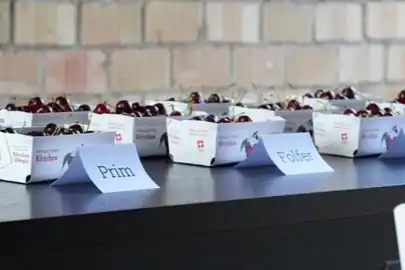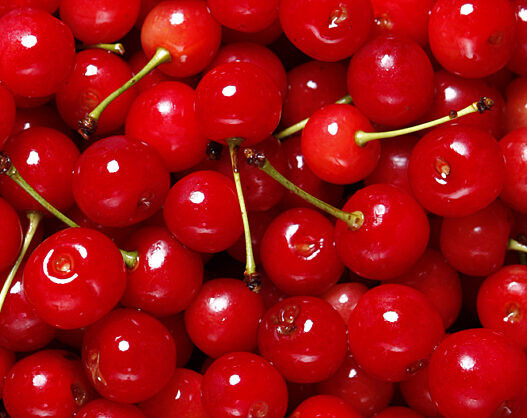The company has shipped around 200,000 kilograms of these varieties harvested in southern Chile to China, a quantity six times higher than that of the previous season.
The ultra-late cherries from southern Chile have concluded the shipping season in China.
The Chilean company Giddings-Cerasus has closed the 2023-24 season once again with the varieties of Cerasina "Final 12.1" and "13.1", from the German geneticist Peter Stoppel. The company, known in China as Xiaomifeng, has surprised the market for the second consecutive year with these varieties, which are attracting increasing interest from the Asian giant.
This year, Giddings-Cerasus celebrated the closure of the cherry season in the three major Chinese markets for imported fresh fruit: Guangzhou, Jiaxing, and Shanghai, collaborating with its main distributors in China: Jwm, Higo, and Riverking, respectively.
At the concluding stage of this Year of the Wood Dragon in China, diplomatic and commercial commissioners, wholesale market directors, and a great interest from buyers from different markets participated.
Multiple origins
Giddings-Cerasus' strategy, since its early steps in China, has been to position itself as a sustainable, reliable, and quality supplier of fresh cherries. Today, the Xiaomifeng brand is one of the most prestigious brands in Chile in the Chinese market and for over 5 years has been gaining a strong position even in cherries from the United States, from where the company also ships fruit.
The company intends to focus on the Chinese New Year beyond the traditional period, which usually falls between the last week of January and mid-February, depending on the year.
"Today we can see in the markets that we are in a privileged position with the Cerasina Final 12.1 and 13.1 varieties. We anticipate that our company will grow in the multiple origin cherry sector and expand the presence of our brand in other Asian countries," commented Ramon Arrau, CEO of Giddings-Cerasus.
These varieties come from southern Chile, particularly from Río Negro, a location near Osorno in Chile (over 1,000 kilometers from the capital Santiago), and also far from the more traditional cherry-producing valleys, especially Curicó, traditionally known as the world cherry capital.
In this area of the Lakes District, late and ultra-late varieties of Cerasus have found a development hub thanks to the unique characteristics of temperature, rivers, and lakes in the surrounding area, offering a new potential growth area for this crop.
Regarding the commercial performance of this fruit that closes the Chilean cherry season, the last fruit of the season in China was quickly sold out, and buyers were eager for more. The company shipped around 200 tons of these late varieties to China, six times more than the previous season. The last batch of Giddings Cerasus cherries sent to the Asian market arrived on the Seapan Belief ship on March 18, with over 90 tons.
Gonzalo Matamala, General Manager of Giddings Fruit Asia & China, emphasized that "this is one of the few of the so-called 'new varieties' of cherries, which has stood out among others, especially because it provides compactness and flavor, even with longer transit times, allowing distributors to market and sell through different channels in the Chinese ecosystem."
Mia Lu, Procurement Manager of Higo Jiaxing Fruit, stated during the activity that "this is our second year closing the Chilean cherry season in China with the Cerasina varieties. Our customers called us fifteen days ago to book the last load of cherries; the potential of this variety is impressive."
Meanwhile, Sean Chen, Director of Raw Materials at Riverking, indicated that "this fruit is firm and tasty, making it a strong leader in the latter part of the season."
This closing activity also served to conclude a complex but successful season for Chilean cherries and to initiate the planning of the next one, as the industry is expanding its volumes and Giddings Cerasus is leading the extension - in duration and quality - of the season, well beyond traditional deadlines.
Source: Redagrícola
Image: Redagrícola
Cherry Times - All rights reserved










